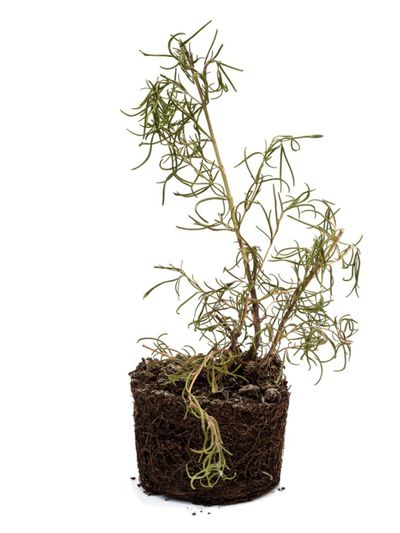These tough, flexible plants seem almost bulletproof, but when brown rosemary plants appear in the garden, you may wonder, “Is my rosemary dying?”. Although brown rosemary needles aren’t a particularly good sign, they are often the only early sign of root rot in this plant. If you heed their warning, you may be able to save your plant.
Causes of Brown Rosemary Plants
There are two common causes of rosemary turning brown, both involving environmental problems that you can easily correct. The most common is root rot, but a sudden shift from the very bright light on a patio to the comparatively darker interior of a home can also cause this symptom. Rosemary evolved on the rocky, steep hillsides of the Mediterranean, in an environment where water is available for only a short period before it rolls on down the hill. Under these conditions, rosemary never had to adapt to wet conditions, so it suffers terribly when planted in a poorly draining or frequently over-watered garden. Constant moisture causes rosemary roots to rot, leading to brown rosemary needles as the root system shrinks. Increasing drainage or waiting to water until the top 2 inches (5 cm.) of soil are dry to the touch is often all these plants need to thrive.
Potted Rosemary Turning Brown
The same watering policy for outdoor plants should hold for potted rosemary — it should never be left in a saucer of water or the soil allowed to remain wet. If your plant isn’t over-watered but you’re still wondering why rosemary has brown tips, look to recent changes in lighting conditions. Plants that move indoors before the last frost may need more time to adjust to the lower amounts of available light. When moving rosemary from the patio, start earlier in the season when indoor temperatures and outdoor temperatures are similar. Bring the plant inside for a few hours at a time, gradually increasing the time it stays inside during the day over a few weeks. This gives your rosemary time to adjust to indoor lighting by producing leaves that are better at absorbing light. Providing supplemental light can help during the adjustment period.
